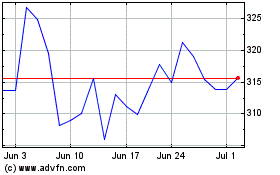By Darryn King
A new version of the Spotify experience greets the user by name,
plus a friendly "Hi!"
It is a simple touch befitting Spotify Kids, a version of the
music-streaming app for children between the ages of 3 and 12 that
is now being tested in the U.K., Sweden, Denmark, Australia and New
Zealand. Spotify Technology SA describes the app, available for no
additional fee to Spotify Premium Family members, as a "playground
of sound."
To the grown-up observer, the most obvious change is visual
rather than aural: Spotify's customary, hacker-chic dark interface
has been significantly lightened up. Spotify Kids is full of
bright, appealing colors and whimsical doodles, including an
animated critter of the user's choosing that serves as an
ever-present avatar. In fact, there are two modes within the app,
one for younger users with softer pastel tones, and one for older
users with more vivid colors and hipper, humorous graphics, like a
T. rex wearing sunglasses.
Both versions boast a clean, stripped-down interface, with less
text. It is appealing to children's eyes and sympathetic to their
cognitive skills. It also is ergonomically kinder to children's
hands: There are fewer features to fiddle with and the touch
targets, or buttons, are significantly larger and hence easier for
smaller thumbs and fingers to reach.
Children are Spotify's next generation of listeners, said
Jessica Forbes, vice president of research and development at
Spotify Premium, which has only been available to those ages 13 and
up. "But we realized that there was nothing out there from a music
standpoint, from an audio standpoint, that is designed just for
kids."
The right user experiences are crucial for building
relationships with customers, said Fura Johannesdottir, global
chief design officer at Huge, a digital agency owned by the
Interpublic Group of Cos.
Companies have to obsess about digital interactions with
customers. "It isn't like it used to be where you would buy a
product again and again because you liked it," she said. "Now
people want more than that. They want a relationship with brands
and they use digital interactions to do that."
User experience was traditionally considered part of the design
process, but now it is considered integral to the success of the
entire business, said Matt Olpinski, a UX designer who runs his own
business, Matthew's Design Co., in Rochester, N.Y. "Without a great
user experience, the product or business will have lower
conversions, less engagement and ultimately fewer users."
Designing apps and websites for children puts that in stark
relief.
Designers at PBS Kids once had to figure out the best way to
display a stop button on a video app for users from 2 to 8 years
old, said Sara DeWitt, vice president of PBS Kids Digital. "We got
into focus groups and we discovered that younger members of the
audience, when they were done watching, just got up and walked
away," she said; they had no concept of stopping a video.
The designers also had to figure out how to let children watch
videos full-screen without overcomplicating the controls. In the
end, the app didn't make it an option: It automatically expanded
videos if someone watched for 7 or 8 seconds without touching the
screen, Ms. DeWitt said.
Companies need to pay more attention to the way children use
digital products, Ms. DeWitt said. "It's an underappreciated area,"
she said.
Spotify, which also recently updated its main app for iPhone
users to make some functions easier, could certainly benefit from
hooking the next cohort of customers. It is the world's leading
music-streaming service with nearly 35.5% of the global market in
an estimate last year by MIDiA Research, a media research firm. The
company said it had 271 million monthly users in the fourth quarter
of 2019. But Spotify faces increasing competition from Apple Inc.'s
Apple Music, which has more paid subscribers than Spotify in the
U.S., as well as other major players such as YouTube Music from
Alphabet Inc.'s Google; Amazon.com Inc.'s Amazon Prime Music; and
Aspiro AB, doing business as Tidal.
While children's content is in no short supply on these
services, Spotify Kids represents the first effort by a major
streaming service to create an entirely new app intended for young
users to interact with on their own, with little, if any, parental
assistance.
Like any company setting out to design and develop a new app,
Spotify was highly mindful of user experience -- the precise way
the app looks, works and feels. Not only did Spotify Kids have to
be easy and intuitive for a very specific target audience, it had
to be fun and appealing too.
As for the music, Spotify Kids contains a wading pool of 6,000
songs instead of the adult version's 50 million or so. Humans keep
out inappropriate content by manually choosing the songs on Spotify
Kids, making playlists, and reviewing lyrics and album artwork.
Some changes are subtle. The app's playlists of liked songs is
called "Your Favorites," as opposed to the grown-ups' utilitarian
"Liked Songs."
The app will evolve based on beta test findings, with Spotify
promising, for example, even more nuanced parental settings,
including the ability to block certain artists. The company also
plans to expand into stories, audiobooks and podcasts, none of
which are currently available on the children's app.
There is another aspect of Spotify Kids that will benefit
parents' experience, according to the company: Parents'
automatically generated Spotify playlists won't be contaminated by
their children's music tastes. "It's liberating parents'
algorithms," Ms. Forbes said.
--Mr. King is a writer based in New York.
(END) Dow Jones Newswires
March 02, 2020 12:14 ET (17:14 GMT)
Copyright (c) 2020 Dow Jones & Company, Inc.
Spotify Technology (NYSE:SPOT)
Historical Stock Chart
From Mar 2024 to Apr 2024

Spotify Technology (NYSE:SPOT)
Historical Stock Chart
From Apr 2023 to Apr 2024
